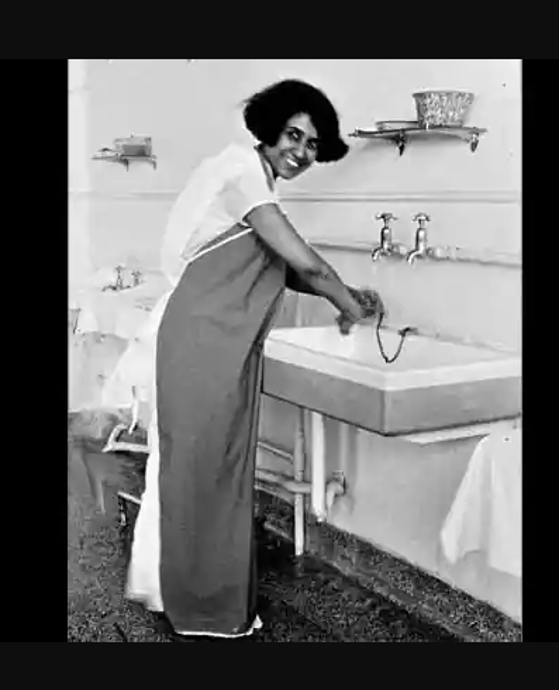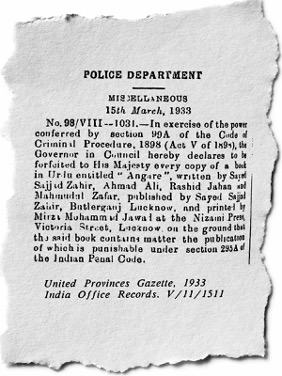Recollecting the first time she encountered her literary mentor Rashid Jahan as a B.A. student in 1936, the noted Urdu feminist writer, Ismat Chughtai describes the scene of a young woman, donning a sleeveless blouse and sari, delivering an impassioned speech at a meeting of progressive writers and poets in Lucknow. Defying conventions which otherwise ordered both women’s attire and presence within public spaces, Jahan emerges in Chughtai’s account as a rebel, as someone unreservedly unmoored, unafraid, and fierce.
A doctor by profession but a writer by political choice, Jahan left a lasting impression on Chughtai, her boldness convincing her that “one woman like Rashid Apa was far superior to ten ordinary women” (Chughtai 2001, 108). Importantly, for the young Chughtai, Jahan’s boldness also upended notions that had historically given force to how women should be and what women could be. In other words, for Chughtai, Jahan opened up other possibilities of being a “woman”, possibilities in excess of familiar and familial norms that had historically framed the image of the “woman” as homely, virtuous, and inert.
And yet this liaison far from eliciting the approval of the people around Chughtai, invoked a sense of concern, especially in the eyes of her family. In a later interview with the journal Mahfil, Chughtai recalled the disapproval her family harboured against Jahan. In her family’s view, by encouraging Chughtai to express herself freely and openly, Jahan had in some irrevocable way spoiled her.
It is no accident that it is from the locus of the family that such a critique of Jahan’s influence on Chughtai was advanced. As Geeta Patel has noted, in postcolonial South-Asia, notions of domesticity and the family – with the obliging woman as its centrepiece – had been integral in articulating an emerging national consciousness. Within this figuration, the category of the family, as mediated by the unchanging, homely, and virtuous image of the woman becomes a necessary icon for performing soon-to-come nation-ness and nation-hood (Patel 2004).
So, in a sense by introducing Chughtai to non-familiar (and in turn non-familial) ways of being, Jahan’s (spoiling) influence on Chughtai can be read as constituting a transgression against the boundaries of behaviour permissible to a young Muslim woman in the India of the 1930s. Importantly, Chughtai’s account of Jahan offers an important analytical and political entry-point to both situate and understand Jahan. When read through Chughtai’s re-collections of Jahan, the theoretical and political import of Jahan lies in not only how she inspired, but in also how she spoiled.
Born to Shaikh Abdullah and Wahid Jahan Begum in 1905, the couple who famously undertook the reform movement for Muslim women’s education in Aligarh, Jahan was brought up in a household where – as she once laughingly remarked – she and her sisters had “slept on the mattress of women’s education and covered ourselves with the quilt of women’s education from our earliest consciousness” (Quoted in Saiduzzafar 1973, 159). Together with starting the journal Khatun (Woman), a periodical intended to educate women following purdah, the couple also set up the first all-girls school in Aligarh in 1906.
It was to this school that Jahan went every morning in a covered palanquin to study. While at school she studied history and modern science, at home she would help her mother with publishing and editing the family-run journal Khatun. It is thus obvious that from an early age Jahan had access to a well-rounded education that was not traditional of most Muslim households of that era. And yet, although her upbringing equipped her with a freedom quite unusual for a Muslim woman, like the other women of the Abdullah household, Jahan was expected to observe purdah, a practice she was vehemently against.
As soon as she left the confines of her family home in Aligarh to study medicine in Delhi (and much to the annoyance of her family), Jahan gave up purdah and cut her hair into a bob, “a style she later made her younger sisters at home follow” (Bano 2012, 60). After graduating from medical school in 1931, Jahan was assigned to Lucknow by the provincial medical commission to work as a government doctor, a post she would eventually give up to start her own private practice which offered women from lower caste and class communities free treatment.
Begum Khurshid Mirza, Jahan’s younger sister, describes this period in Jahan’s life as one of wide-ranging activism. She remembers Jahan as a doctor who always “went beyond the call of duty”, and as someone who not only “got patients admitted into hospitals but also looked into their general welfare” (Mirza 2005, 94). In addition, and apart from offering free medical treatment, Jahan held adult education classes about reproductive health, and even encouraged other Muslim women to undertake a career in medicine.
It was also in Lucknow that Jahan first ventured seriously into experimenting with the literary craft. Introduced to a politically driven and intellectually-charged group of writers by a friend of her brother, she met here for the first time Sajjad Zaheer, Ahmed Ali, and Mahmuduzzafar. Like Jahan, these individuals belonged to upper-class Muslim families, and like her were concerned with transforming society through an engaged critique of its oppressive orthodoxies.
The most significant outcome of this collaboration was the publication of a pioneering collection of short fiction in 1932, provocatively titled Angarey (Burning Coals) and to which Jahan contributed a play and a story. The writers (who would come to be known as the Angarey group) were “filled with a zeal to change the social order” and Angarey was their attempt to initiate a new radical trend in Urdu literature (Bano 2012, 58).




